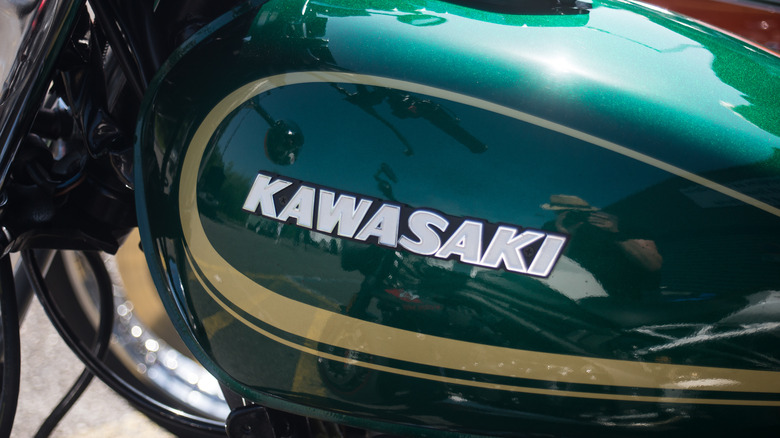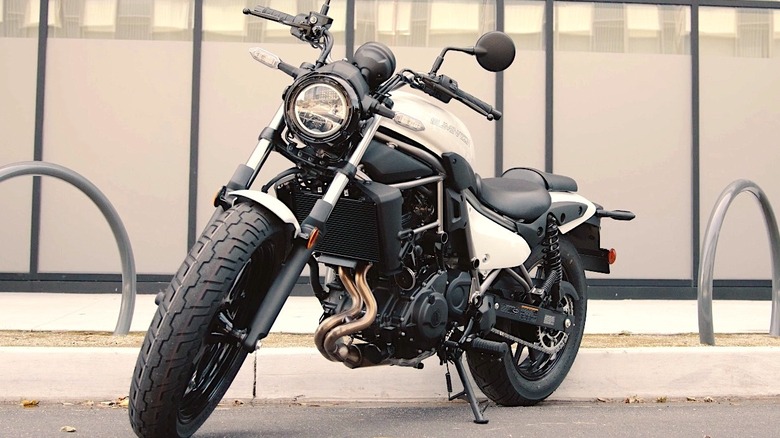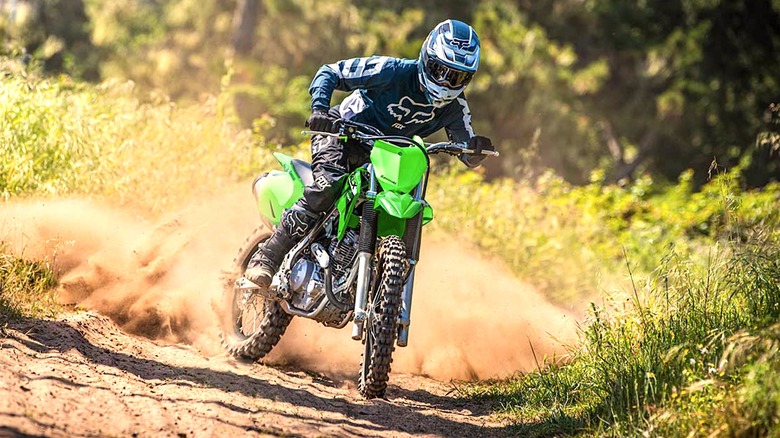Where Are Kawasaki Motorcycles Made, And Who Owns The Company Now?
Kawasaki motorcycles have been helping bikers throttle up on the world's various dirt tracks, race tracks, and freeways for the better part of the past century, and the Japanese motor company is primed to continue doing so for the foreseeable future. As for its past, Kawasaki has had skin in the motorcycle game since the early 1950s, producing their first engines in 1953.
By 1960, the company was ramping up production on fully integrated motorcycles via an alliance with Meguro Manufacturing Company, with the first Kawasaki-branded bike hitting the streets of Tokyo in 1961. In the decades since, Kawasaki Motorcycles has transformed from a Japanese startup into one of the more celebrated brands on the planet, making an impressive slate of bikes that have proven as big a hit with weekend road warriors as pro riders who make a living riding fast.
Still, given the company's longevity, you may have a question or two about not just its ownership but where Kawasaki motorcycles are made. So, here's a quick rundown of Kawasaki's ownership and manufacturing stats.
Where are Kawasaki motorcycles made?
We'll try and answer the second question first because consumers are now paying more attention to where a product is made than ever. As it is, the answer to where Kawasaki motorcycles are made today is a little tricky. But from a historical standpoint, most Kawasakis built in the 1960s and early '70s were manufactured in Japan. However, if you bought a Kawasaki in America between 1975 and the early 2000s, it's possible the motorcycle was made in the U.S., as the company opened a manufacturing plant in Lincoln, Nebraska, circa 1974. In that regard, Kawasaki was a legit trailblazer, with the Lincoln plant making the company the first foreign vehicle company to open a manufacturing plant in the U.S.
Some of Kawasaki's best-loved bikes were built Stateside after the Lincoln plant began production, including the KZ400, KZ900, Ninja 600R, and KZ1000P, with the latter earning some primetime celebrity serving as one of the motorcycles ridden by Jon and "Ponch" in the hit TV series "CHiPS." These days, Kawasaki's U.S. operations are no longer devoted to motorcycles, with plants mostly producing ATVs and Jet Skis as well as cargo doors and rail cars. In 2011, the company reportedly moved most of its medium and large motorcycle manufacturing operations to Thailand, so if you bought a new Kawasaki cruiser in recent years, odds are it was made there.
Who owns Kawasaki Motorcycles today?
It might be tricky to figure out exactly where your Kawasaki motorcycle was made, but the company's ownership history is a little easier to track. That's because Kawasaki's motorcycle division is still tied to the company founded by the entrepreneur whose surname is emblazoned across virtually every bike it's ever produced. That entrepreneur is Shozo Kawasaki, who established Kawasaki Tsukiji Shipyard in Tokyo, Japan, in 1878.
That first company had nothing to do with manufacturing motorcycles, of course, with Kawasaki's company instead focusing on the shipping of sugar and tea. But Kawasaki became fascinated by shipping vessels in those early days. After being incorporated as Kawasaki Dockyard Co. in 1896, Kawasaki eventually turned his company's focus to building them. By 1911, Kawasaki was also building steam locomotives and soon began manufacturing aircraft, too. Once motorcycles joined Kawasaki's portfolio in 1961, the company had a stake in pretty much every transportation market except for automobiles.
Kawasaki eventually decided to house its docking, manufacturing, and aircraft outlets under one corporate banner, with Kawasaki Heavy Industries Ltd. becoming incorporated in 1969. Kawasaki's motorcycle and engine division remained under the Heavy Industries banner until 2021, when restructuring spun it off into a separate company, Kawasaki Motor Corps. U.S.A. Though "U.S.A." is in the title, Kawasaki's motorcycle division is still technically owned by the same Japanese interests. Thankfully, the company has continued its history of innovation since the move, recently even introducing a potentially groundbreaking Hydrogen-powered motorcycle.


